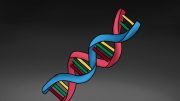RE: “Bat out of Hell” (February 1, 2012)
Individuals need to understand the magnitude of the cascade effects created by a white-nose syndrome pandemic killing bats, or any pathogen powerful enough to change an ecosystem for that matter. It is no longer an issue of just the direct interactions of species feeling the impacts of biodiversity loss, but also the second, third, fourth order mutualistic interactions, including humans, feeling the effects of altered bat populations.
It is essential that the U.S. congress has recognized the seriousness of the implications and has taken initiative to provide the money for research to halt the spreading of the disease. For those who think it is money wasted on a useless animal, think again.
If bat populations were to crash, we may risk reverting back to an era reliant on synthetic pesticides that have, in the past, been proven to generate fatal outcomes on non-target species in a desperate attempt to control insect infestation. Not to mention the loss of the bats contribution to their habitats as natural fertilizers from guano, seed dispersal, pollinators and medicinal qualities, such as an anticoagulant compound found in their saliva that can be used in the treatment of strokes. Simply put: humans would experience an environmental and economic devastation of a well-established ecosystem service.
For example, a study done by Fujita and Tuttle concluded that 289 plant species rely on bat pollination and produce 448 bat-dependent products. The disappearance of bats alone would consequently cost millions of dollars due to a decline in the production of goods.
Spending money for research to rescue a valuable keystone species now means saving vast amounts of money and time to reconstruct a damaged ecosystem in the future. We mustn’t ignore the complexity of ecology and acknowledge that no organism in our biosphere acts alone.
Samantha Cortes




